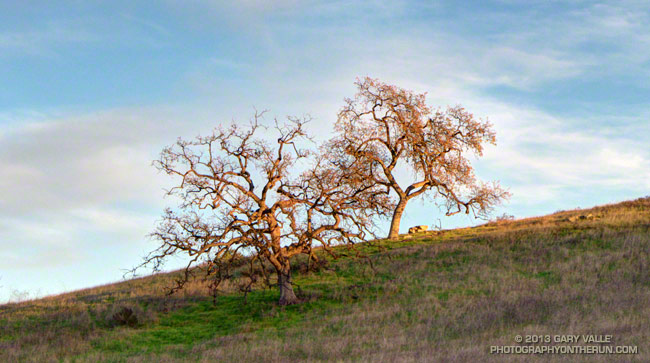
Two valley oaks on the slopes leading up to Lasky Mesa.
From Monday’s sunset run.
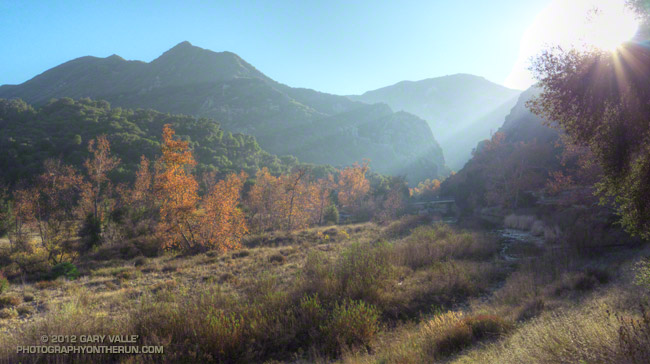
Because of our warmer Mediterranean climate with dry Summers and (sometimes) wet Winters, many of Southern California’s lower elevation native trees and shrubs benefit from retaining their leaves in Winter and are not deciduous.
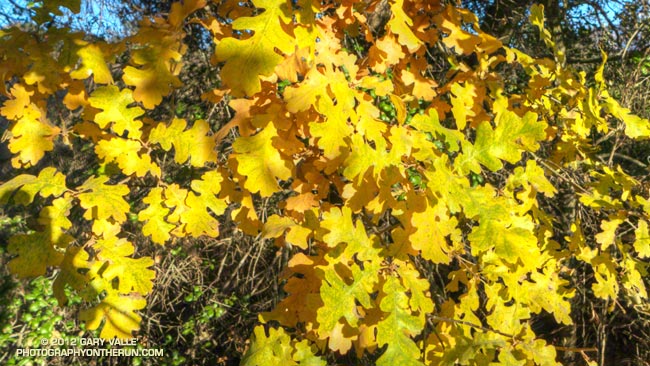
Those native trees that are deciduous don’t usually grow in dense stands or show their fall colors in a dramatic fashion.
Some of the Southern California trees found at low elevation that are deciduous are valley oak, sycamore, willow, cottonwood, ash, alder, elderberry and walnut.
From last Sunday’s run in Malibu Creek State Park.
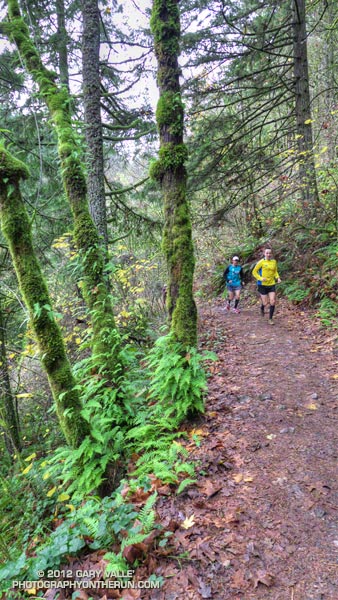
Even by Pacific Northwest standards it had been wet. Over the past five days Portland had recorded over four inches of rain. Earlier in the week heavy rain and strong winds had pummeled the area — flooding roads, toppling trees, causing numerous traffic accidents and leaving thousands without power.

Today, Thanksgiving Day, was the first in several that no rain was forecast. Taking advantage of the good weather our Thanksgiving Day — and that of many Portlanders — started with a hike at the Hoyt Arboretum.
The arboretum’s collection includes over 1000 species, accessed by a 12 mile network of well-maintained and marked trails. The collection includes species from around the world. Some examples are dawn redwood from China, butterfly maple from North Korea, Himalayan Juniper from Nepal and Patagonian Cypress from the Andes. Given they are usually found near treeline, I was surprised to see the arboretum’s collection includes bristlecone pines.
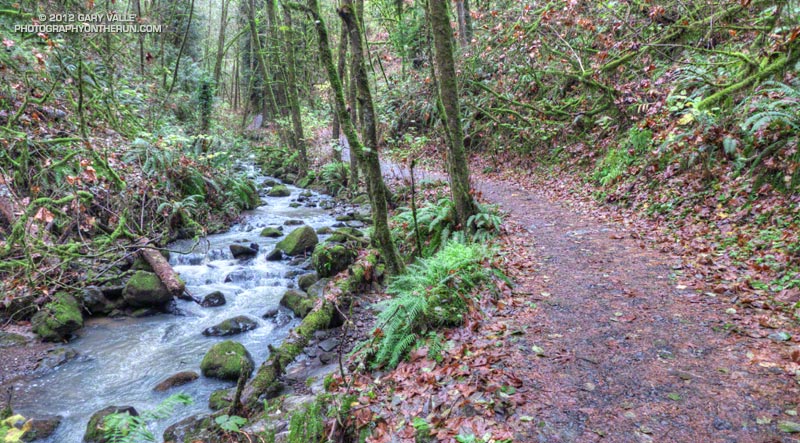
My run on the Wildwood Trail started at Fairview, at the end of a loop hike in the arboretum that had taken us to an overlook with a view of Mt. St. Helens — and on a clear day — Mt. Rainier and Mt. Adams. I had promised to be back to the house in “about two hours ” so the plan was to run north on the Wildwood Trail for about an hour and then head back.
Trail runners love running new trails — especially trails as beautiful and well-maintained as the Wildwood Trail. The 30 mile long trail is just part of a 70+ mile system of trails in a 5100 acre urban park managed by the Forest Park Conservancy.
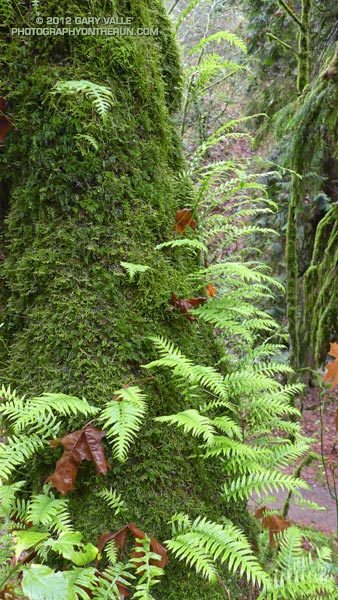
I was amazed — after all that rain the Wildwood Trail was in great shape. My socks were dry and my running shoes were just a little damp around the edges. The running was superb. I’d run down to Burnside, up to Pittock Mansion, and then down to Macleay Park. Continuing to descend, I’d run along Balch Creek and past the iconic Stone House.
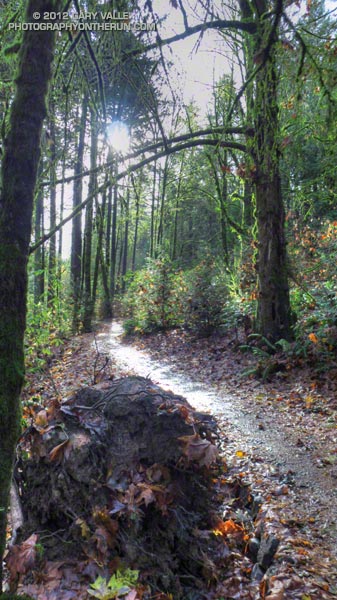
The theme was green on green, with towering Douglas-fir, hemlock and cedar. A mixed understory of alder and maple was highlighted by mosses, ferns and remnant splashes of yellow, orange and brown.
At Wildwood’s junction with the Aspen Trail I was about 55 minutes out. Time to start thinking about turning around. I ran a few yards down the Aspen Trail, then decided I’d rather stay on the Wildwood Trail.
It had been just four days since I’d run a 50K in Kernville, California, and I knew I was going to be slower on the way back. At some point soon I really would need to turn around. I started up some switchbacks, wondering what was on the trail ahead…
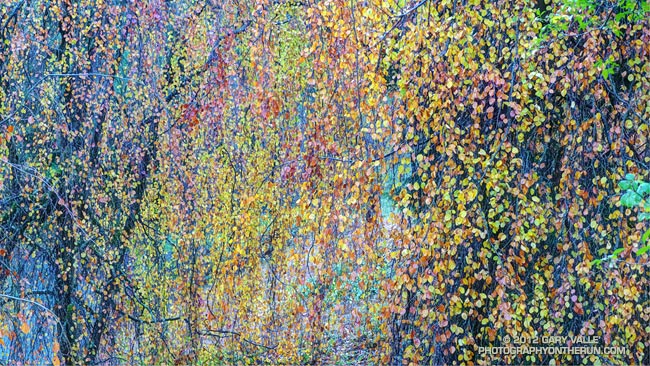
Producing an effect reminiscent of pointillism, the pendulous branches of weeping beech create a curtain of late season color along a trail in Hoyt Arboretum, Portland, Oregon.
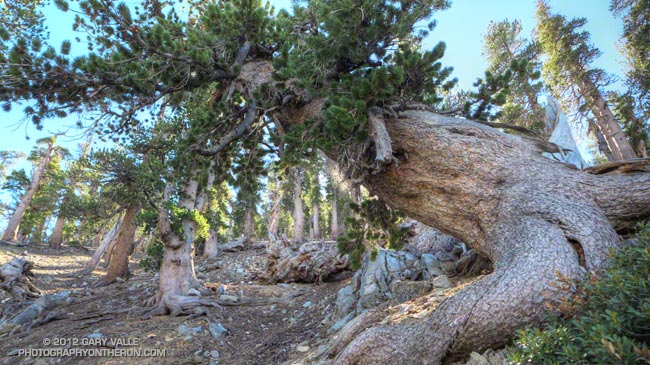
A nearly pure stand of limber pines on the north slopes of Throop Peak in the San Gabriel Mountains near Los Angeles.
Limber pines can be very long-lived. The Rocky Mountain Tree Ring Research OLDLIST lists several crossdated limber pines older than 1600 years. The Wally Waldron Tree near the summit of Mt. Baden-Powell is estimated to be 1500 years old.
From an out and back run last week from Dawson Saddle to Mt. Baden-Powell.
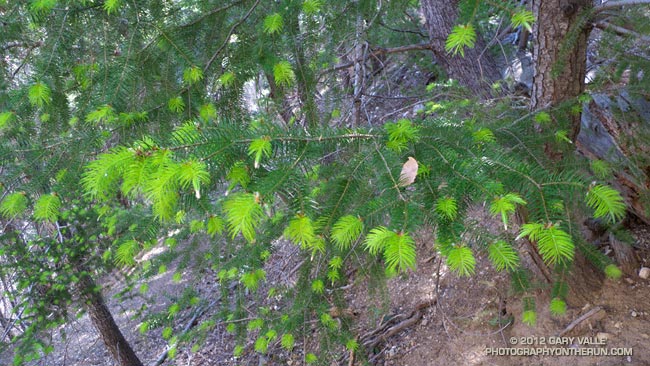
These young-appearing bigcone Douglas-firs along the Valley Forge Trail are probably older than they look. According to the Forest Service Silvics Manual, Volume 1: Conifers, saplings may be only 2 ft. tall when 40-50 years old and as old as 70 years when they break through the oak overstory.
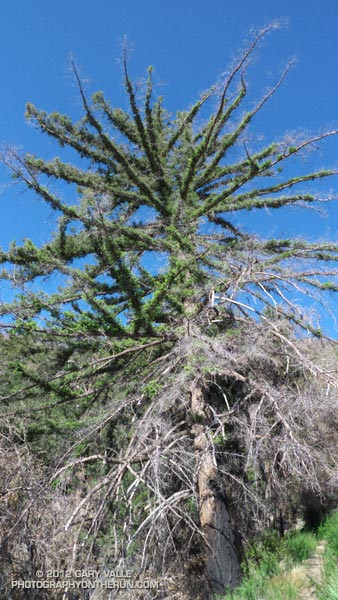
The bigcone Douglas-fir is a very resilient tree that is remarkably fire tolerant. It can lose virtually all of it foliage to a fire, appear to be beyond the point of recovery, yet survive and regenerate its foliage. Fire-scarred bigcone Douglas-firs have been used to analyze fire history and regimes.
The photograph on the left is of a bigcone Douglas-fir along the Valley Forge Trail that was burned in the 2009 Station Fire. Here is a closer view of the same tree showing how new foliage sprouts from buds along its limbs and trunk.
The Valley Forge Trail is in the canyon of the West Fork San Gabriel River in the San Gabriel Mountains near Los Angeles. It connects the Gabrielino Trail to Eaton Saddle on Mt. Wilson Road. The trailhead for Mt. Lowe Truck Trail is at Eaton Saddle.
The photographs are from a trail run in May 2012.
Related post: Red Box – Bear Canyon Loop